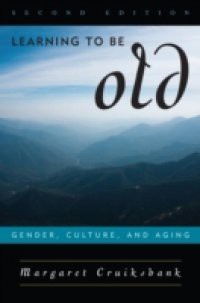What does it mean to grow old in America today? Is 'successful aging' our responsibility? What will happen if we fail to 'grow old gracefully'? Especially for women, the onus on the aging population in the United States is growing rather than diminishing. Gender, race, and sexual orientation have been reinterpreted as socially constructed phenomena, yet aging is still seen through physically constructed lenses. The second edition of Margaret Cruikshank's Learning to Be Old helps put aging in a new light, neither romanticizing nor demonizing it. Featuring new research and analysis, expanded sections on gay/lesbian/bisexual/transgender aging and critical gerontology, and an updated chapter on feminist gerontology, the second edition even more thoroughly than the first looks at the variety of different forces affecting the progress of aging. Cruikshank pays special attention to the fears and taboos, multicultural traditions, and the medicalization and politicization of natural processes that inform our understanding of age. Through it all, we learn a better way to inhabit our age whatever it is.

